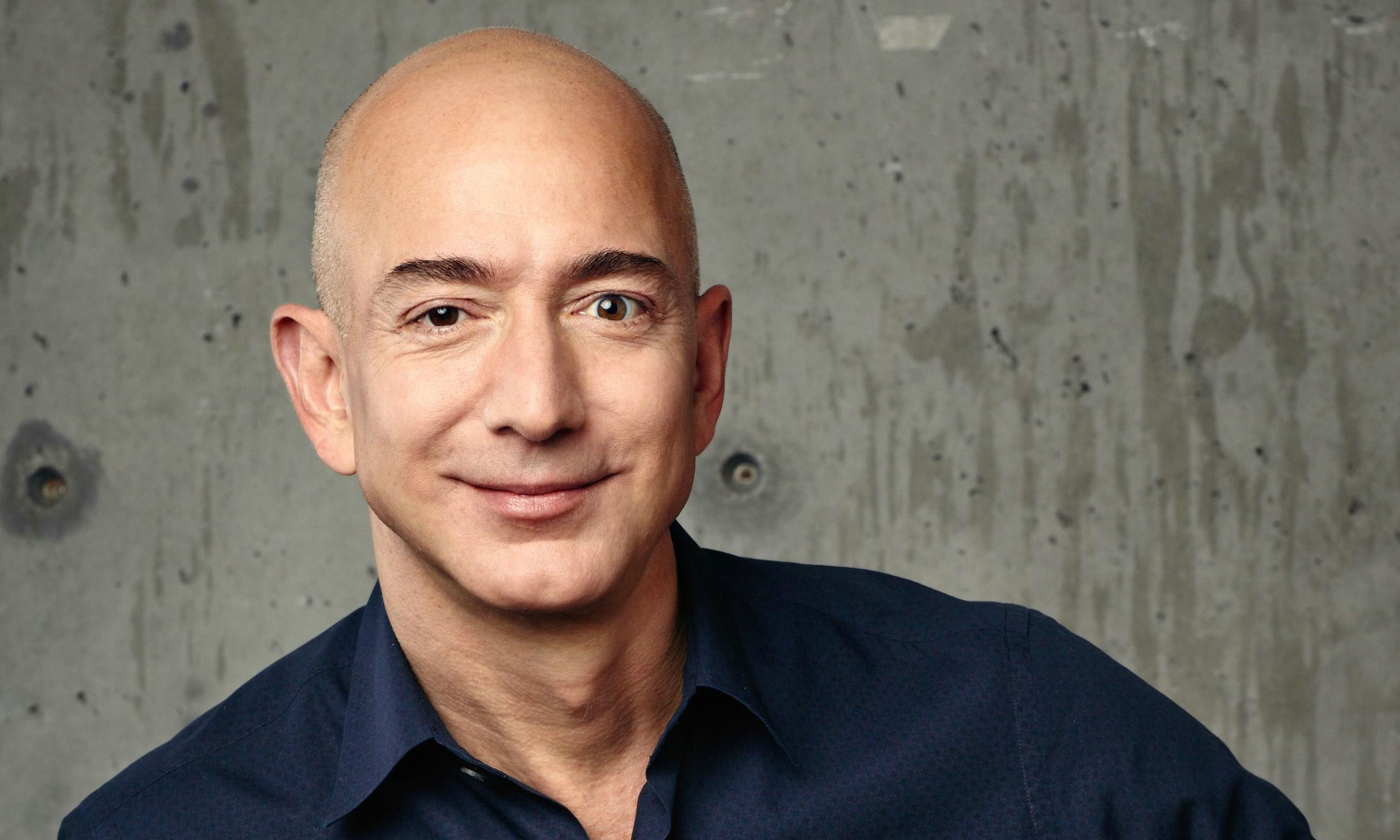In the center of the resplendent stage of the prosperous world, there is such a person who is hailed as the "godfather of luxury goods". With his acute business acumen, unique investment strategy and unparalleled artistic taste, he single-handedly shaped the world's largest luxury goods empire - LVMH Group. He, Bernard Arnault, a legendary figure who perfectly integrates fashion, art and business. His story is like a thrilling luxury epic, which is breathtaking.
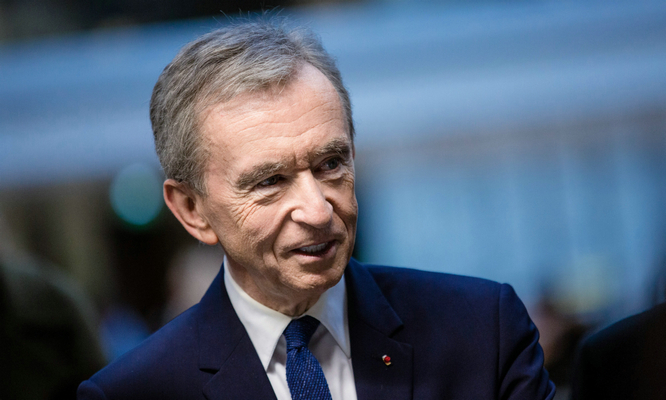
I. Rising from Adversity: From Builder to Luxury Tycoon
1. The choice in the predicament: The transformation path of the builder
Backtracking to the late 1970s, the young Arnault inherited the family construction business but encountered a trough in the industry. The winter of the construction industry did not cool his entrepreneurial enthusiasm, but instead inspired his determination to change. He realized that if he wanted to break out of the cocoon and become a butterfly in the dilemma, he must find a new business opportunity.
2. The counterattack of Boussac: The business genius who initially showed his talent
In 1981, Arnault had a unique vision and spotted the then struggling textile enterprise - Boussac. Facing the doubts and pressure from the outside world, he resolutely decided to acquire this enterprise on the verge of bankruptcy. After taking over, Arnault carried out radical reforms, adjusted strategies, optimized management, and improved product quality. In just two years, he brought Boussac back to life and achieved a turnaround from loss to profit. This feat not only demonstrated Arnault's extraordinary business talent, but also accumulated precious experience for his subsequent business journey.
3. "I always look for undetected value": Arnault's investment philosophy
Arnault once said, "I always look for undetected value." This sentence reveals his unique investment concept. He is good at tapping potential value and dares to invest heavily in areas that seem hopeless in the eyes of others. With accurate judgment and courageous action, he reshapes enterprises in difficult situations one by one into glittering business jewels. The successful transformation of Boussac is precisely the vivid practice of this investment philosophy.

4. The M&A storm: Building the LVMH empire
Arnault's business territory did not stop at Boussac. In 1984, he targeted the French wine and spirits giant Moët Hennessy and then merged with Louis Vuitton to create the world's largest luxury goods group - LVMH. In the following decades, Arnault set off a shocking global luxury goods M&A storm, incorporating top brands such as Christian Dior, Fendi, Bulgari, and Tiffany into his portfolio. These successful M&A cases not only demonstrate Arnault's accurate business insight, but also reflect his profound understanding of brand culture, market demand and industry trends.
5. The brilliance behind the data: The ironclad evidence of rising from adversity
Arnault's rise from adversity is not an empty talk, and a series of hardcore data provide strong evidence for his legendary path. As of 2023, the annual sales of the LVMH Group have exceeded 60 billion euros, the market value has exceeded 350 billion euros, the total number of employees has exceeded 160,000, and the business has spread to more than 70 countries and regions around the world. Bernard Arnault's personal wealth has also once soared to more than 200 billion US dollars, firmly ranking among the top of the global rich list. These numbers silently tell his brilliant achievements in rising from adversity and forging a luxury empire.
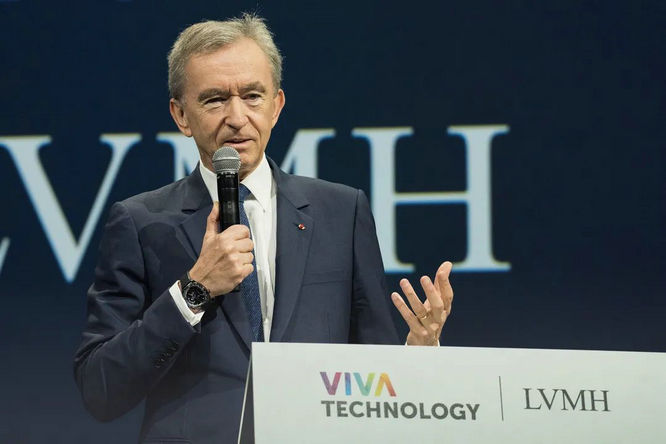
II. "I'm a Hunter": The Business Philosophy of Arnault
1. The Art of Mergers and Acquisitions: Precise Layout to Build an Empire Map
"I never pursue being the first, but being the only." This is Arnault's unique insight into the merger and acquisition strategy. He firmly believes that the true luxury does not simply rely on scale to win, but lies in the uniqueness and scarcity of the brand. According to statistics, since Arnault acquired Christian Dior in 1987, he has completed nearly 60 major merger and acquisition transactions so far, including a group of top brands such as Louis Vuitton, Moët Hennessy, Fendi, and Bulgari, building a huge luxury empire covering fields such as fashion, leather goods, jewelry, watches, perfume, cosmetics, wine and spirits.
These mergers and acquisitions are not blind expansions, but based on the precise prediction of market trends, the profound understanding of brand value, and the keen insight into consumer needs. For example, in 2011, Arnault acquired the Italian jewelry brand Bulgari for nearly 5.2 billion US dollars, precisely seeing the huge potential of the high-end jewelry market and the unique design style and craftsmanship inheritance of Bulgari. This decision made LVMH rise rapidly in the jewelry field. According to the 2023 financial report, the jewelry business has become one of the fastest-growing sectors of the group, with sales increasing by more than 20% year-on-year.
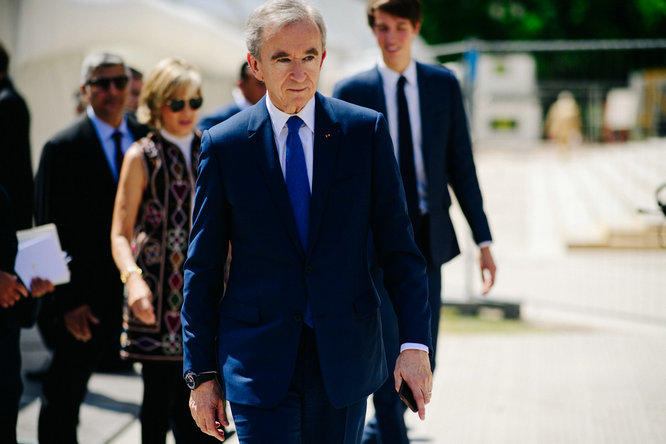
2. Brand Remodeling: Giving New Life to Tradition and Leading the Trend
Arnault firmly believes: "The essence of luxury is innovation, not conservatism." He is good at rejuvenating traditional brands through remodeling. Take Fendi as an example. After Arnault took over, he boldly hired the young designer Karl Lagerfeld, launched the iconic "Double F" logo and the IT Bag "Baguette Bag", and successfully transformed it from a traditional furrier to a world-class luxury fashion brand. Today, Fendi has more than 200 exclusive stores worldwide, with annual sales of more than 1.5 billion euros, becoming an important pillar of the LVMH group.
In Arnault's business philosophy, brand innovation is not to subvert tradition, but to respect history and at the same time dare to challenge the current situation, and lead and shape consumers' aesthetic trends with forward-looking design concepts and marketing strategies. Just as he said in an interview with Forbes: "We are not selling goods, but peddling dreams."
3.Quality First: Adhering to the Craftsman Spirit and Forging Excellent Quality
In Arnault's eyes, "The core of luxury is quality. Without quality, everything is empty talk." Whether it is the brand remodeling of mergers and acquisitions or the operation of its own brands, he always adheres to the ultimate pursuit of product quality. Take LV as an example. Its classic trunk has been highly sought after after more than a century, and the secret lies in always insisting on handmade, and each product condenses the efforts of the craftsmen for hundreds of hours. This persistence in craftsmanship enables the brands under the LVMH group to win the loyalty of consumers with impeccable quality in the fierce market competition.
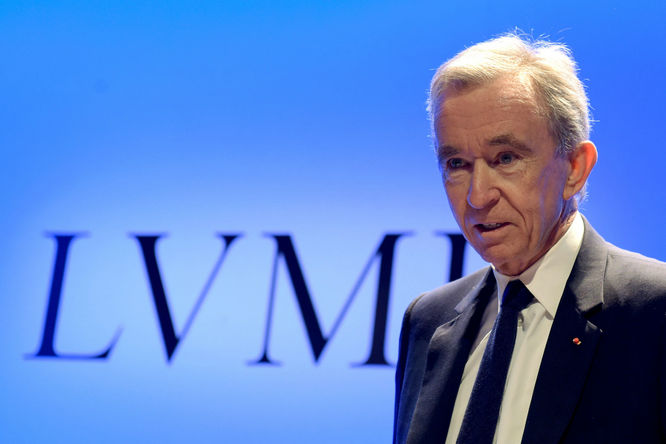
4.Social Responsibility: Advocating Sustainable Development and Setting an Industry Example
Arnault once said: "The future of luxury lies in sustainability." Facing the global issues of environmental protection and social responsibility, under his leadership, the LVMH group actively promotes green supply chain management, invests in the research and development of environmentally friendly materials, reduces carbon emissions, and launches the "LIFE 360" plan, aiming to achieve full carbon neutrality in the group's operations. In 2024, LVMH announced that it will invest 200 million euros in environmental protection projects in the next five years, demonstrating its firm commitment to sustainable development.
5.The Glory Behind the Data: Arnault's Economic Influence
Arnault's business achievements are not only reflected in the huge volume of the LVMH group, but also in its huge impact on the global economy. According to the 2023 data of Forbes, the annual sales of the LVMH group have exceeded 60 billion euros, the market value has exceeded 350 billion euros, and the total number of employees has exceeded 160,000, distributed in more than 70 countries and regions. Arnault himself has topped the list of the world's richest people for many consecutive years, and his personal wealth once exceeded 200 billion US dollars, which fully shows his important position in the global economic map.
III. Future Challenges and Prospects
1.The Art of Mergers and Acquisitions: Precise Layout, Building an Empire Map
"I never pursue to be the first, but to be the only one." This is Bernard Arnault's unique insight into the M&A strategy. He firmly believes that the true luxury does not simply rely on scale to win, but lies in the uniqueness and scarcity of the brand. According to statistics, since 1987 when Bernard Arnault acquired Christian Dior, he has completed nearly 60 major M&A transactions so far, including a group of top brands such as Louis Vuitton, Moët Hennessy, Fendi, and Bulgari, building a huge luxury empire covering fields such as fashion, leather goods, jewelry, watches, perfume, cosmetics, wine and spirits.
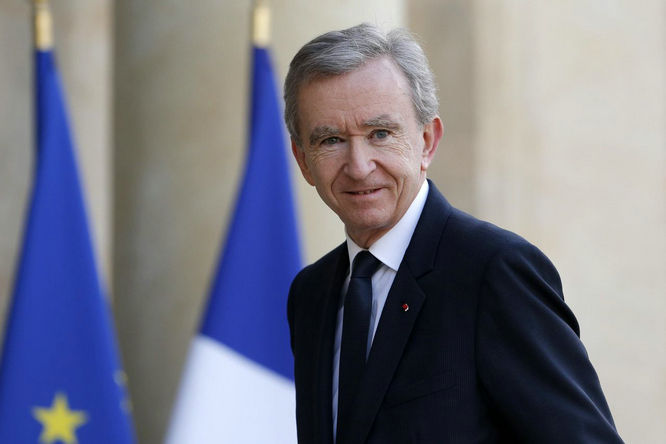
These M&A are not blind expansions, but based on the precise prediction of market trends, the profound understanding of brand value, and the acute insight into consumer needs. For example, in 2011, Bernard Arnault acquired the Italian jewelry brand Bulgari for nearly 5.2 billion US dollars, precisely spotting the huge potential of the high-end jewelry market and the unique design style and craftsmanship inheritance of Bulgari. This decision enabled LVMH to rise rapidly in the jewelry field. According to the 2023 financial report, the jewelry business has become one of the fastest-growing sectors of the group, with sales increasing by more than 20% year-on-year.
2.Brand Rebranding: Giving New Life to Tradition and Leading the Trend
Bernard Arnault firmly believes: "The essence of luxury is innovation, not conservatism." He is good at rejuvenating traditional brands through rebranding. Take Fendi as an example. After Bernard Arnault took over, he boldly hired the young designer Karl Lagerfeld, launched the iconic "double F" logo and the IT Bag "Baguette Bag", and successfully transformed it from a traditional furrier to a world-class luxury fashion brand. Today, Fendi has more than 200 exclusive stores worldwide, with annual sales of over 1.5 billion euros, becoming an important pillar of the LVMH group.
In Bernard Arnault's business philosophy, brand innovation is not to subvert tradition, but to respect history and at the same time dare to challenge the status quo, leading and shaping consumers' aesthetic trends with forward-looking design concepts and marketing strategies. Just as he said in an interview with Forbes: "We are not selling goods, but peddling dreams."
3.Quality First: Adhering to the Spirit of Craftsmanship and Forging Excellent Quality
In Bernard Arnault's eyes, "The core of luxury is quality. Without quality, everything is just empty talk." Whether it is brand rebranding through M&A or the operation of its own brands, he always adheres to the ultimate pursuit of product quality. Take LV as an example. Its classic trunk has been highly sought after for more than a century. The secret lies in always insisting on handmade, and each product condenses the painstaking efforts of the craftsmen for hundreds of hours. This kind of persistence in craftsmanship enables the brands under the LVMH group to win the loyalty of consumers with impeccable quality in the fierce market competition.
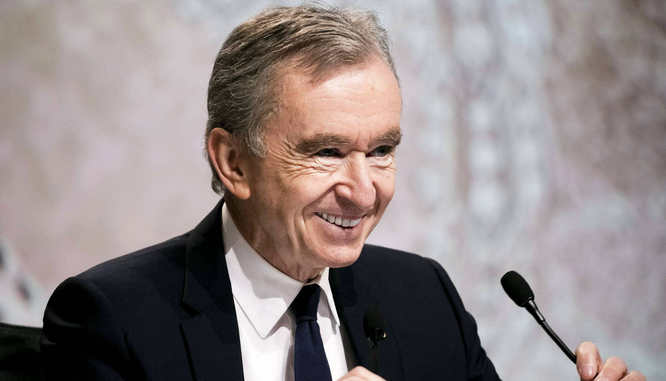
4.Social Responsibility: Advocating Sustainable Development and Setting an Industry Example
Bernard Arnault once said: "The future of luxury lies in sustainability." In the face of global issues such as environmental protection and social responsibility, under his leadership, the LVMH group actively promotes green supply chain management, invests in the research and development of environmentally friendly materials, reduces carbon emissions, and launches the "LIFE 360" program, aiming to achieve full carbon neutrality in the group's operations. In 2024, LVMH announced that it will invest 200 million euros in environmental protection projects in the next five years, demonstrating its firm commitment to sustainable development.
5.The Perfect Blend of Art and Commerce: Bernard Arnault's Unique Perspective
Bernard Arnault firmly believes that "the essence of luxury is to create dreams." He integrates the essence of art into business operations, endows each product with a unique story and soul, making it go beyond the material itself and become a symbol of consumers' pursuit of a better life. He strongly supports the innovative spirit of designers, such as sponsoring the art projects of the Fondation Louis Vuitton and promoting cross-border cooperation between fashion and art, so that the LVMH brand always stands at the forefront of the trend.
Conclusion:
Bernard Arnault, the creator of this fashion empire, has written a luxury legend with his extraordinary business wisdom and artistic vision. He is not only a master of capital operation, but also a weaver of dreams, using exquisite products to satisfy people's yearning for a better life. His story is a vivid textbook about rising from adversity, precise M&A, and the integration of art and commerce, revealing the necessary qualities and mental outlook of a successful entrepreneur. In the years to come, we look forward to Bernard Arnault and his LVMH group continuing to perform more exciting business chapters and leading the global luxury industry to a new peak.
